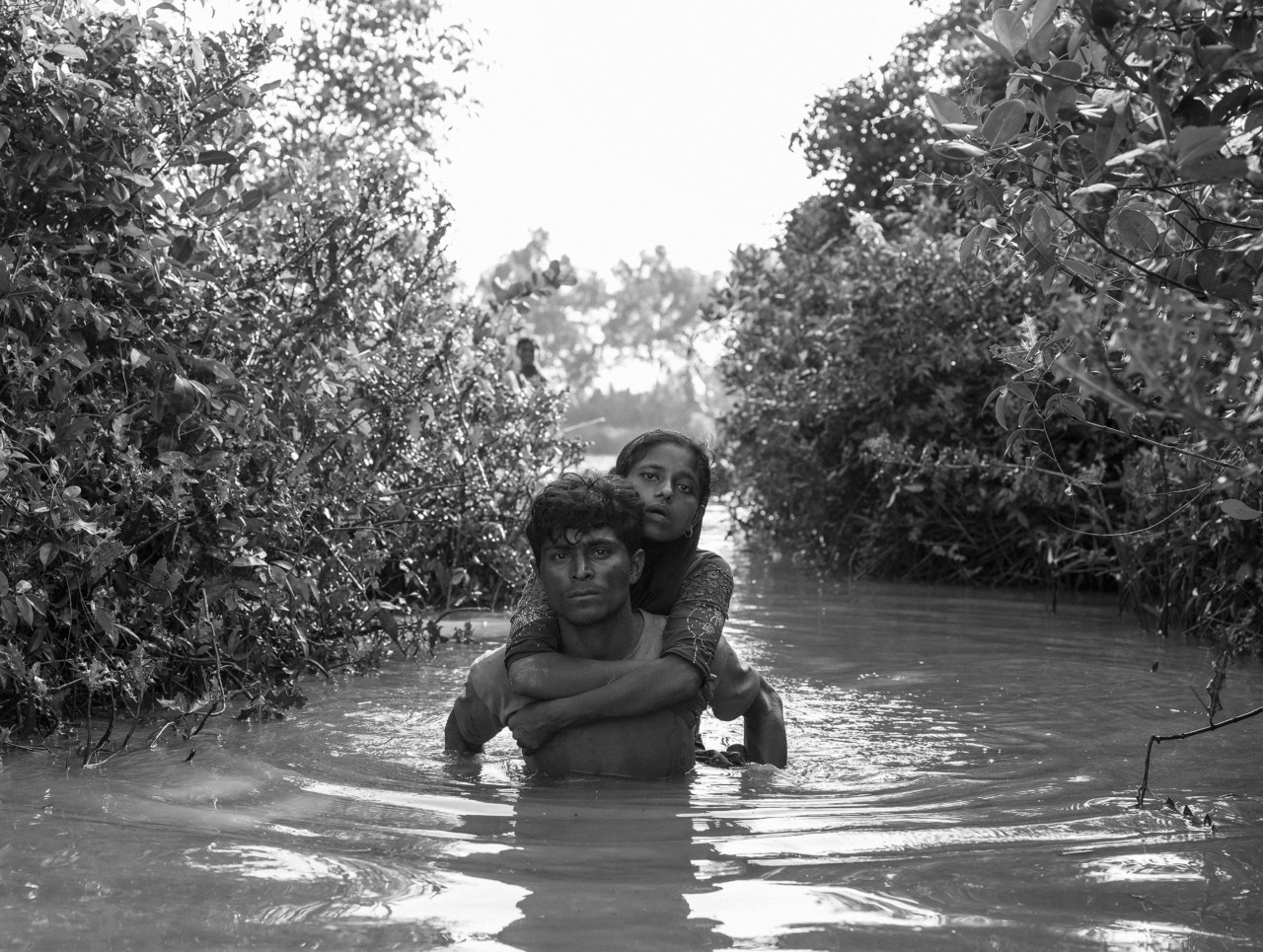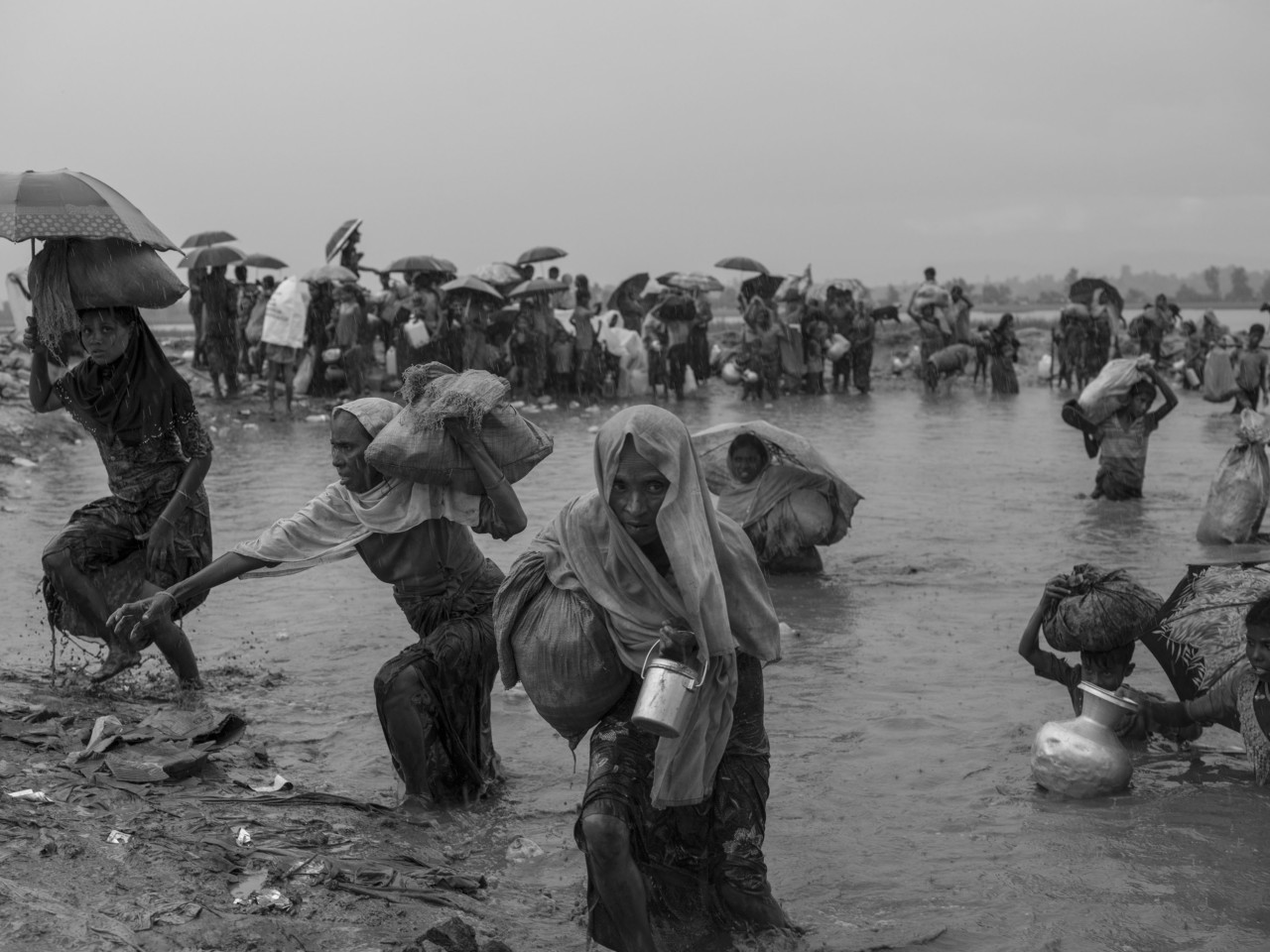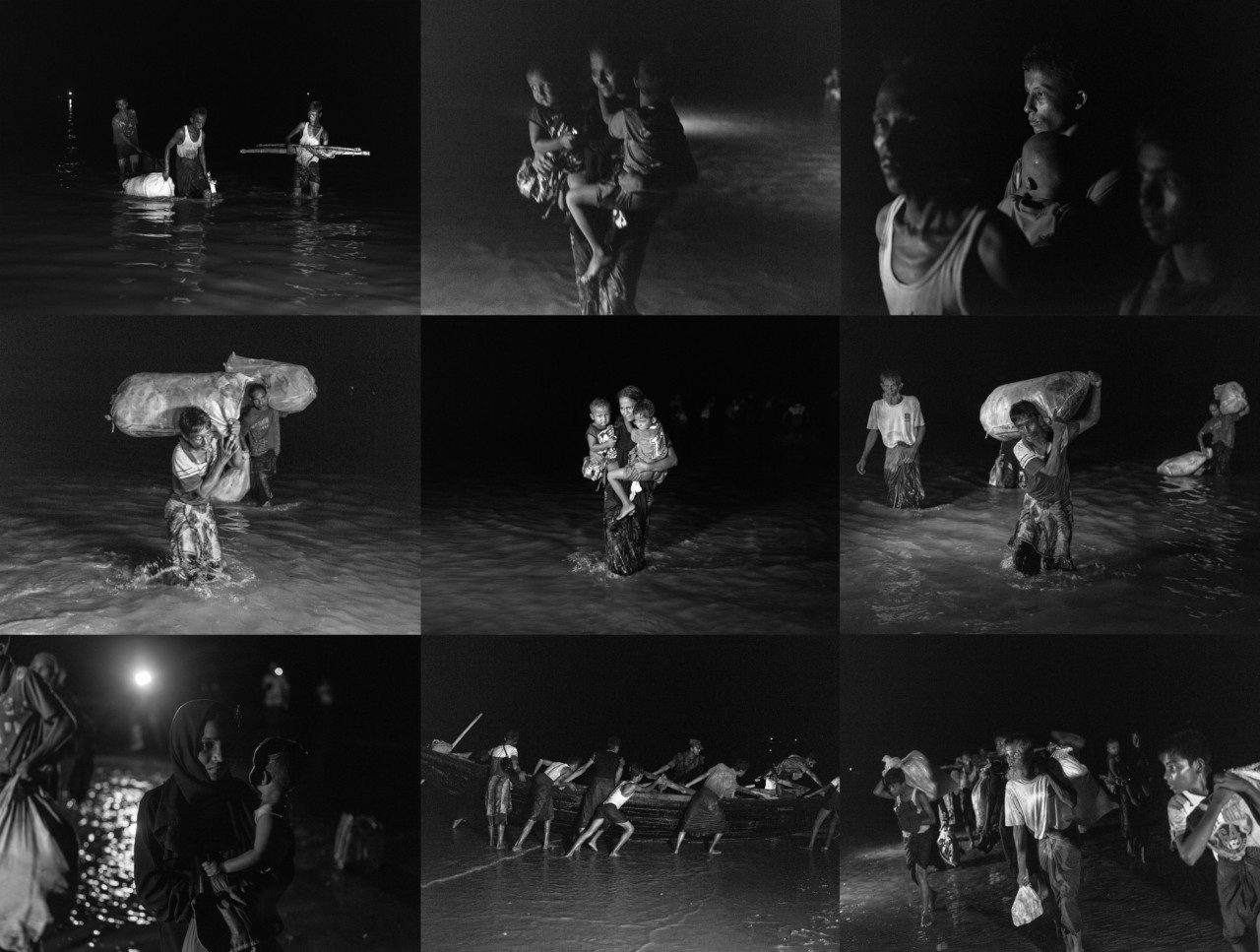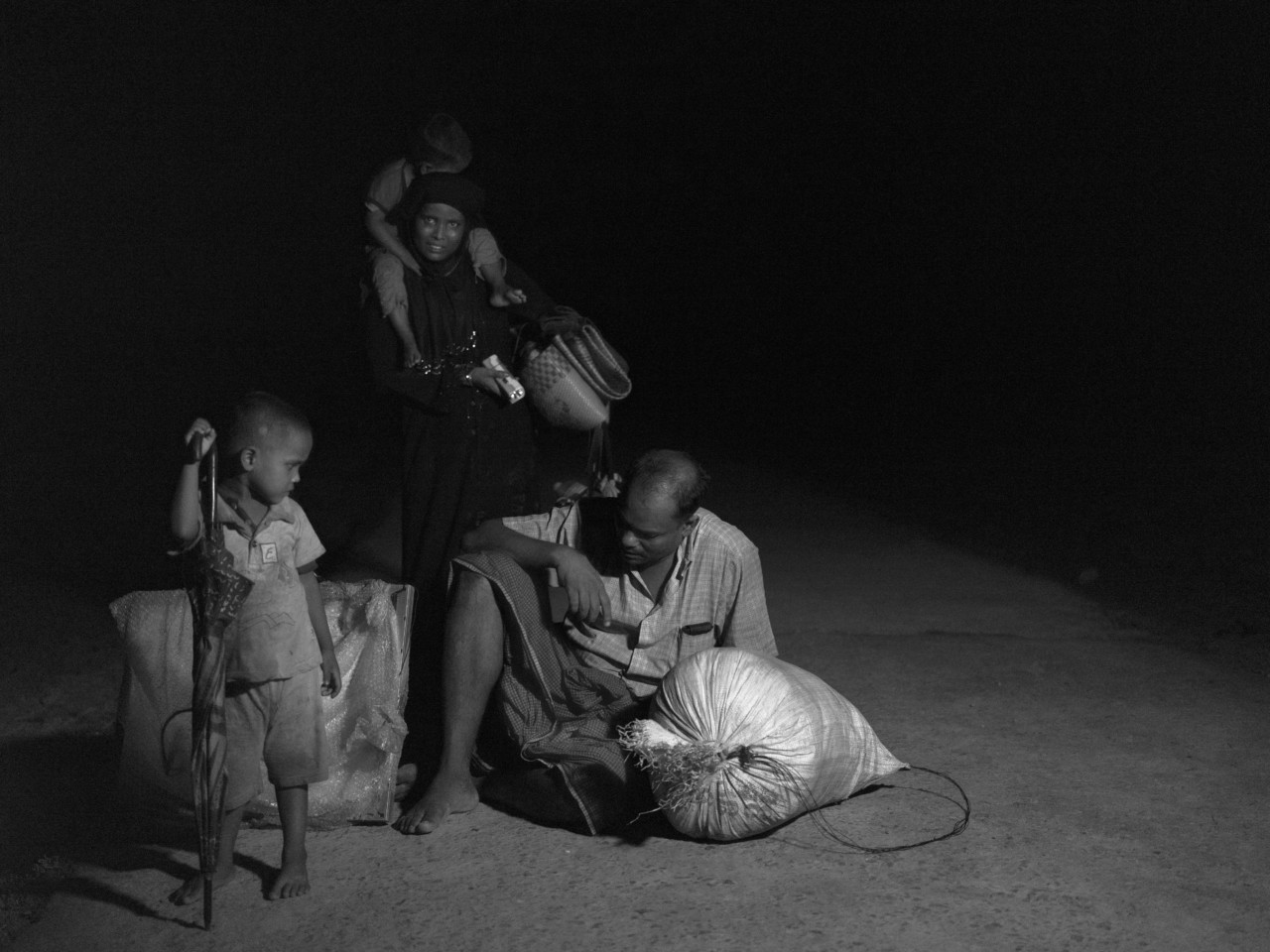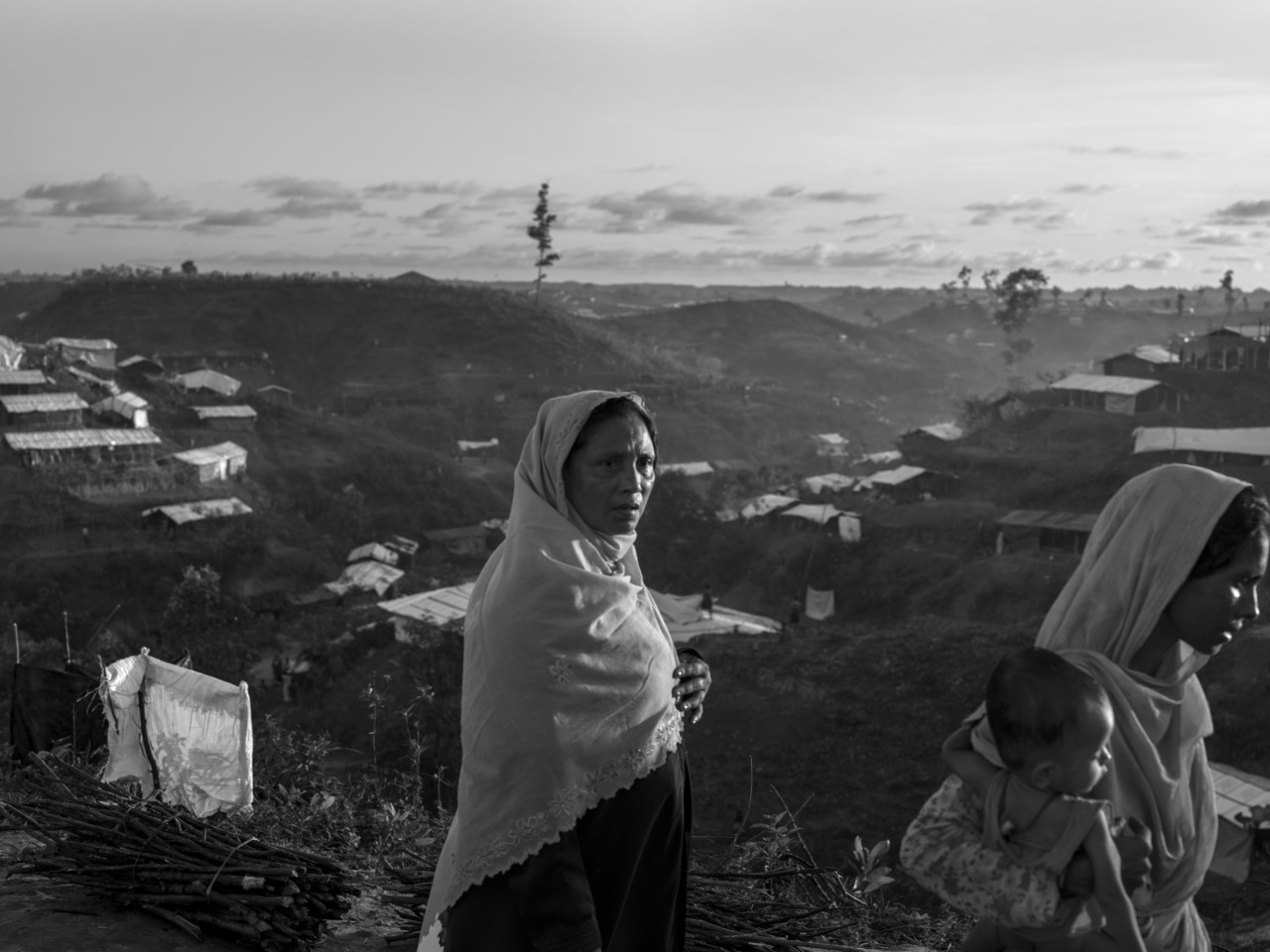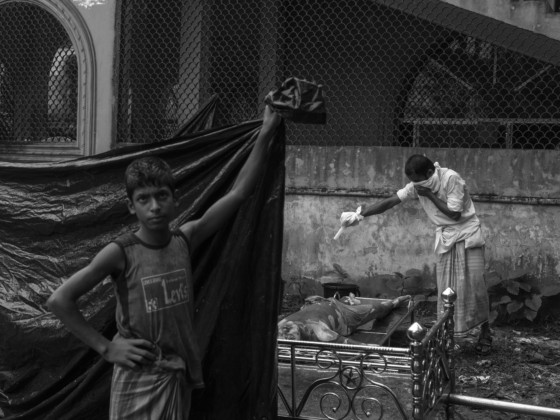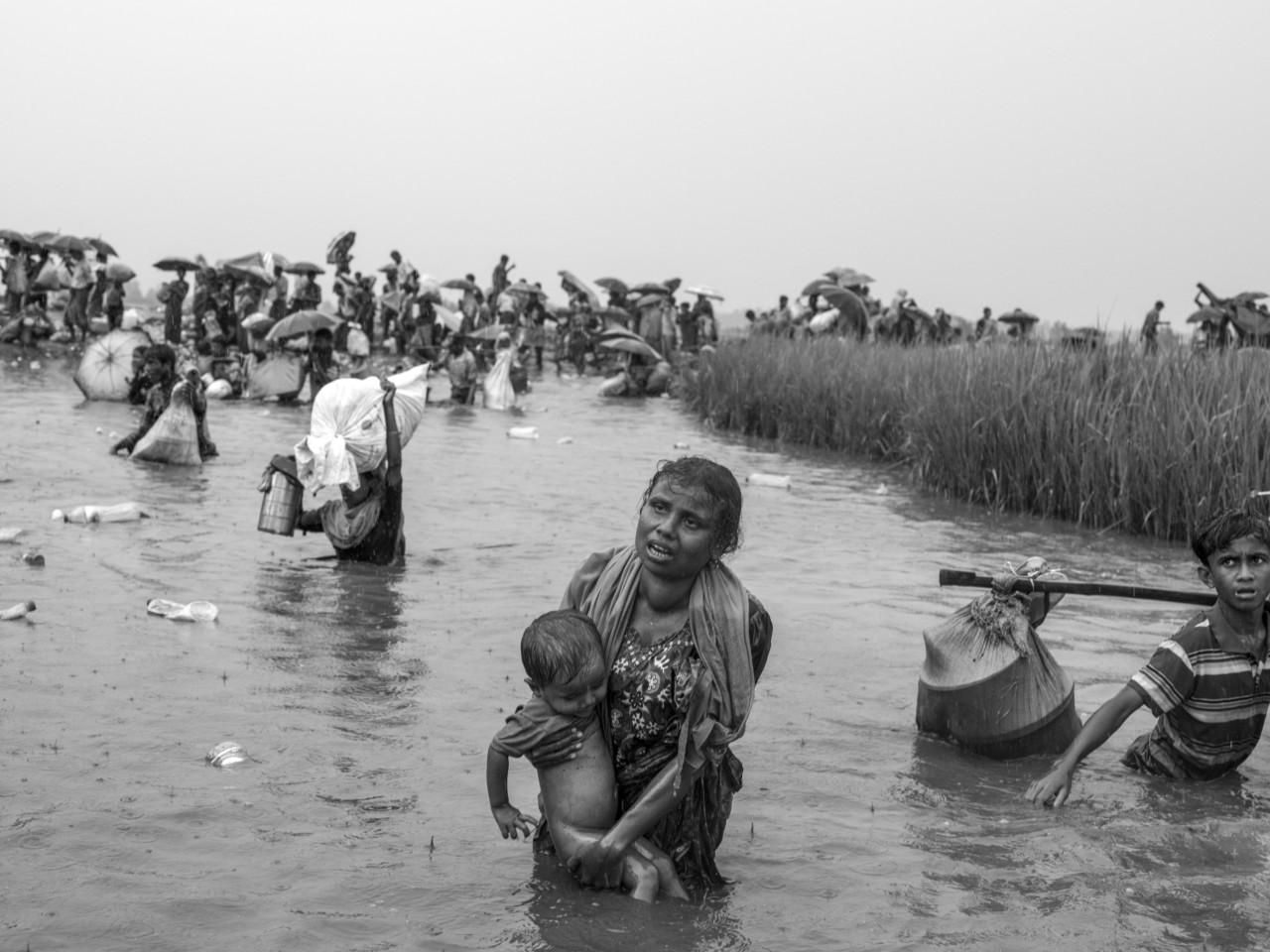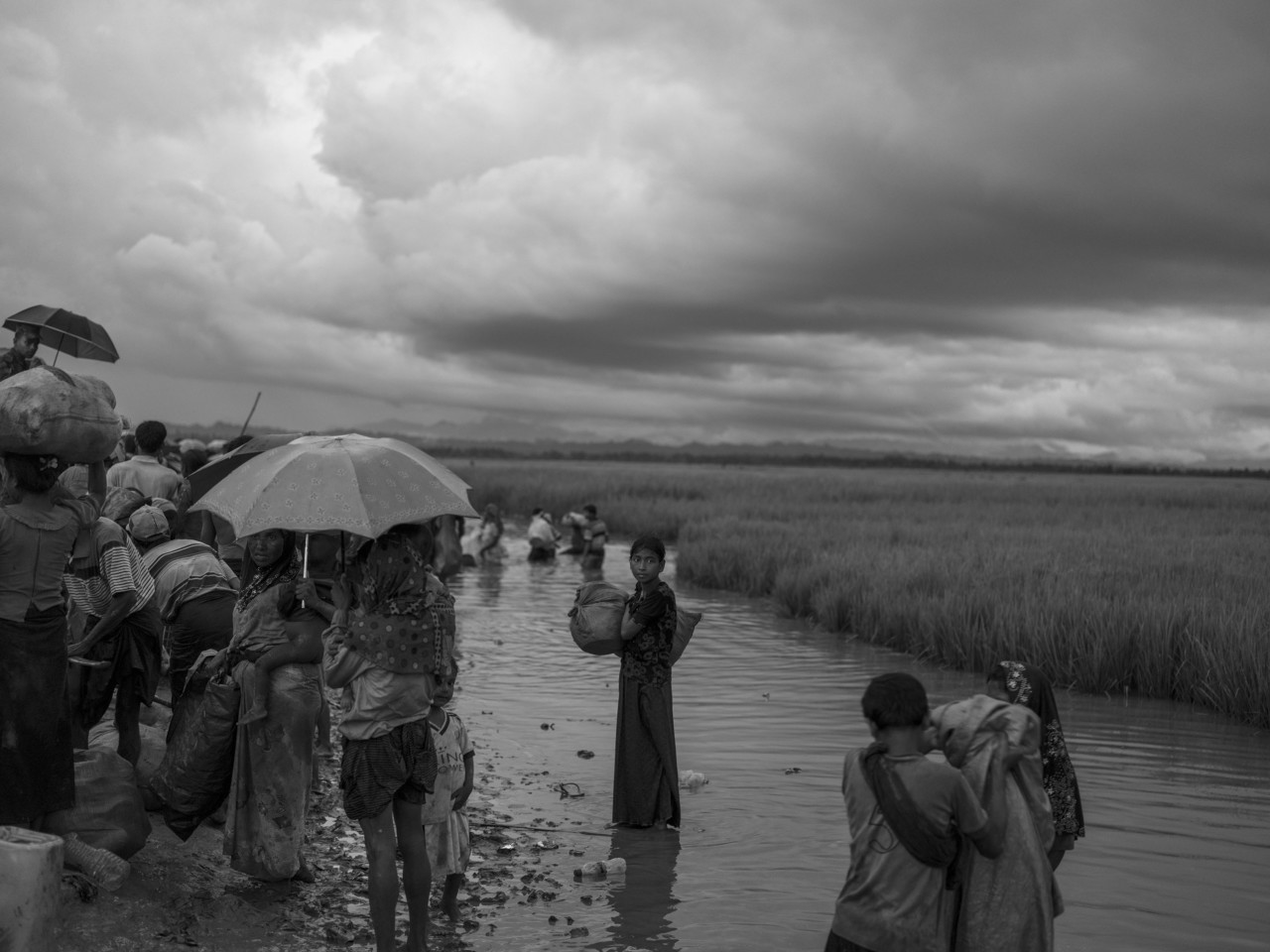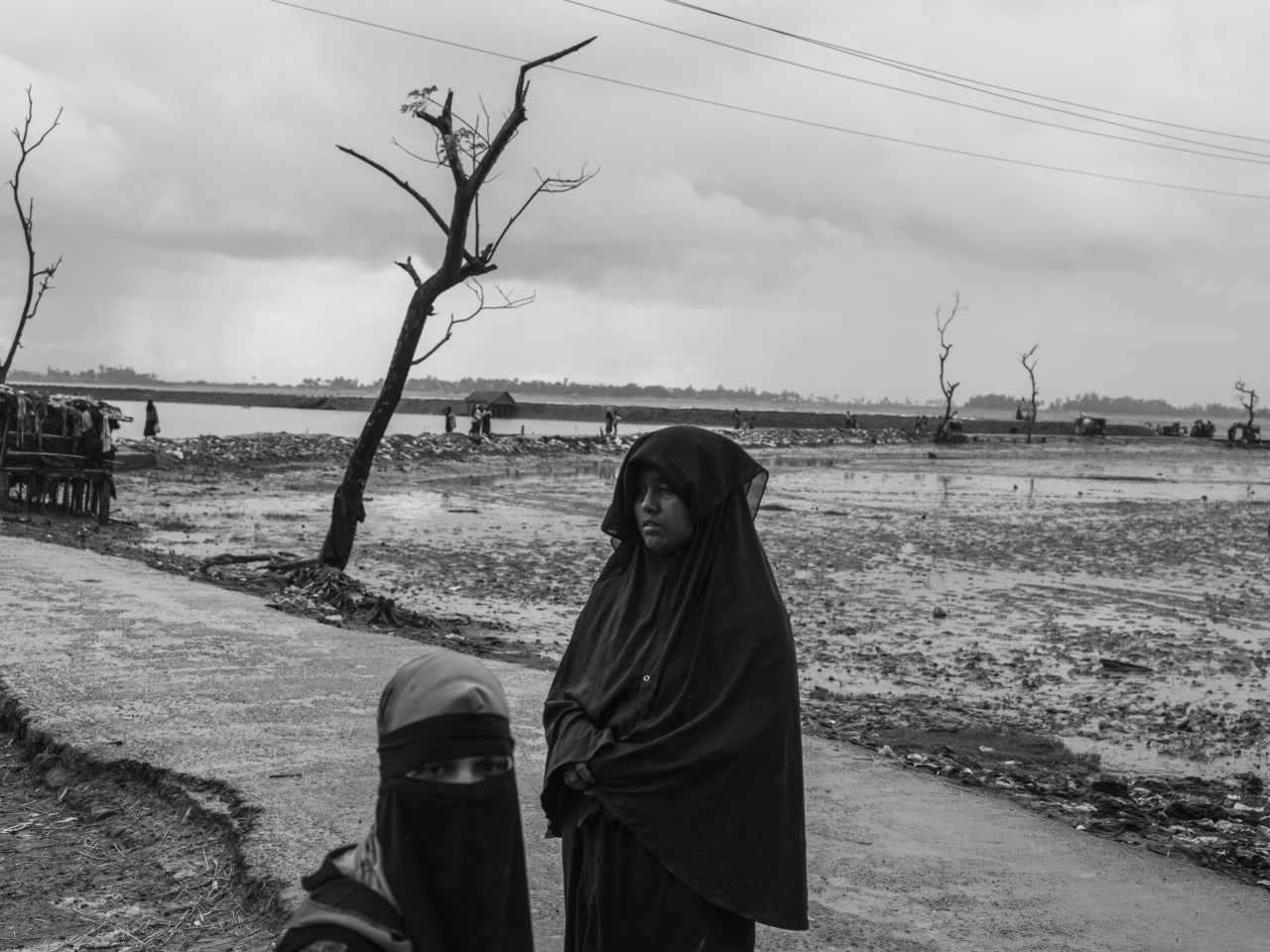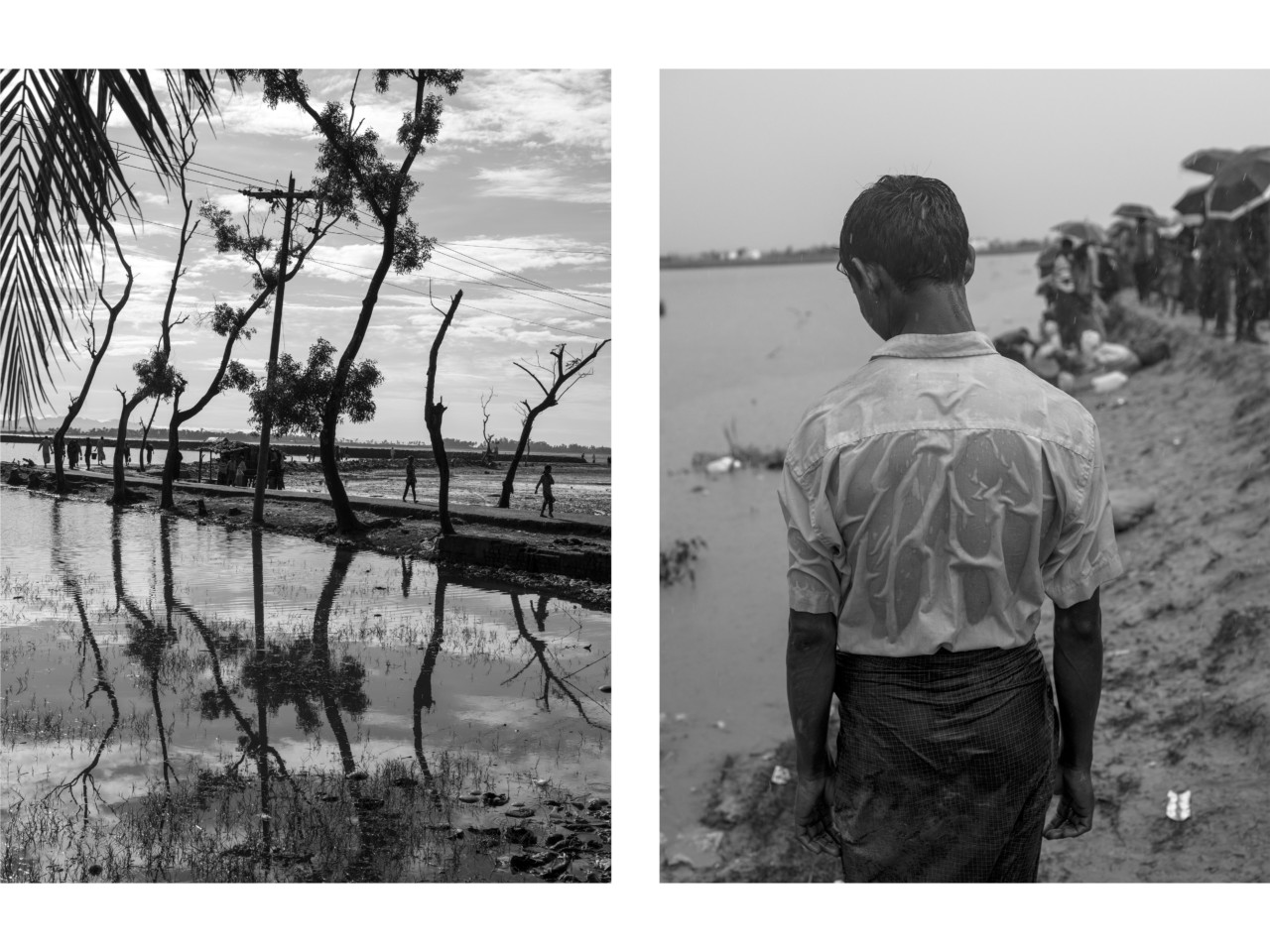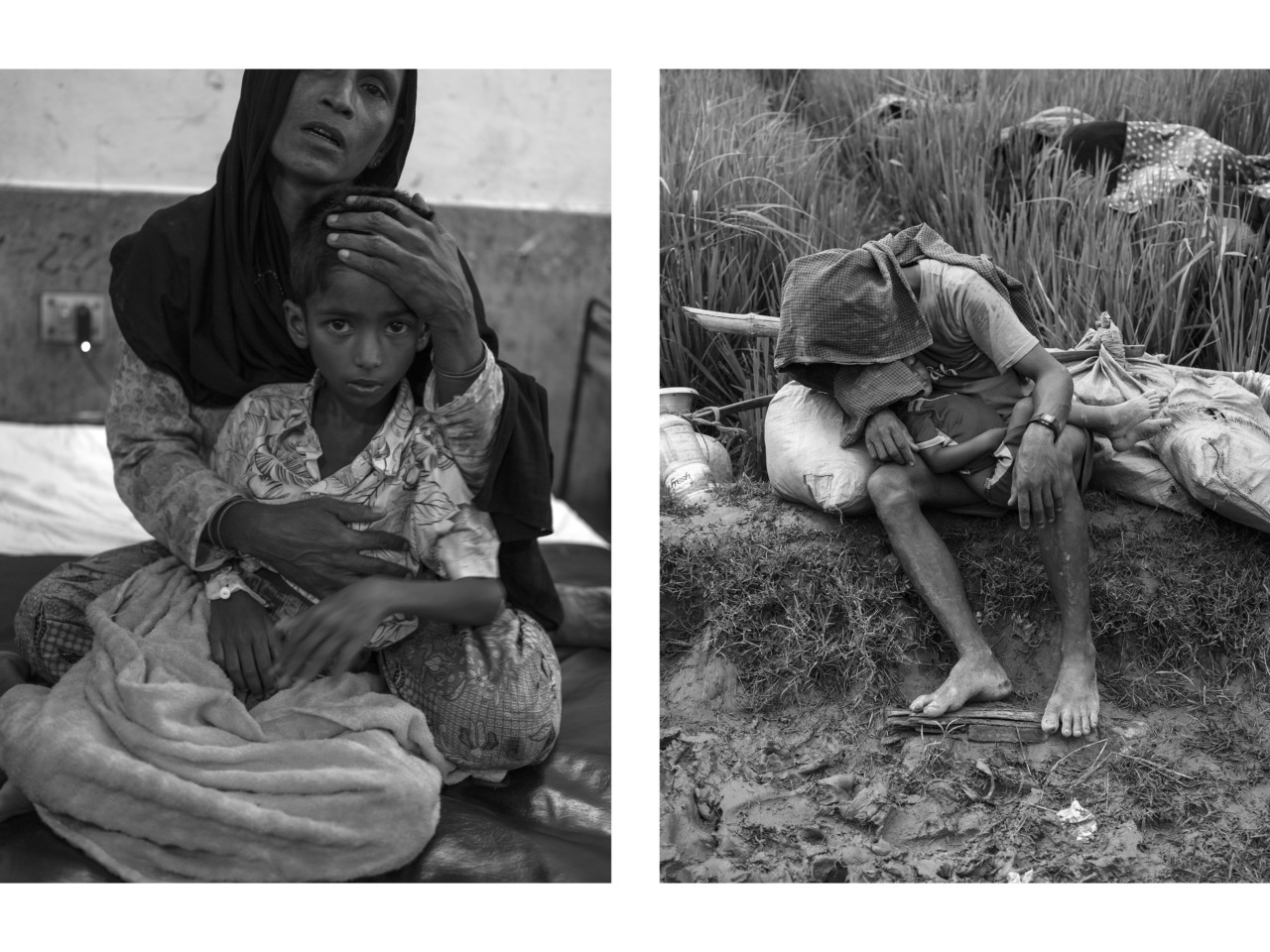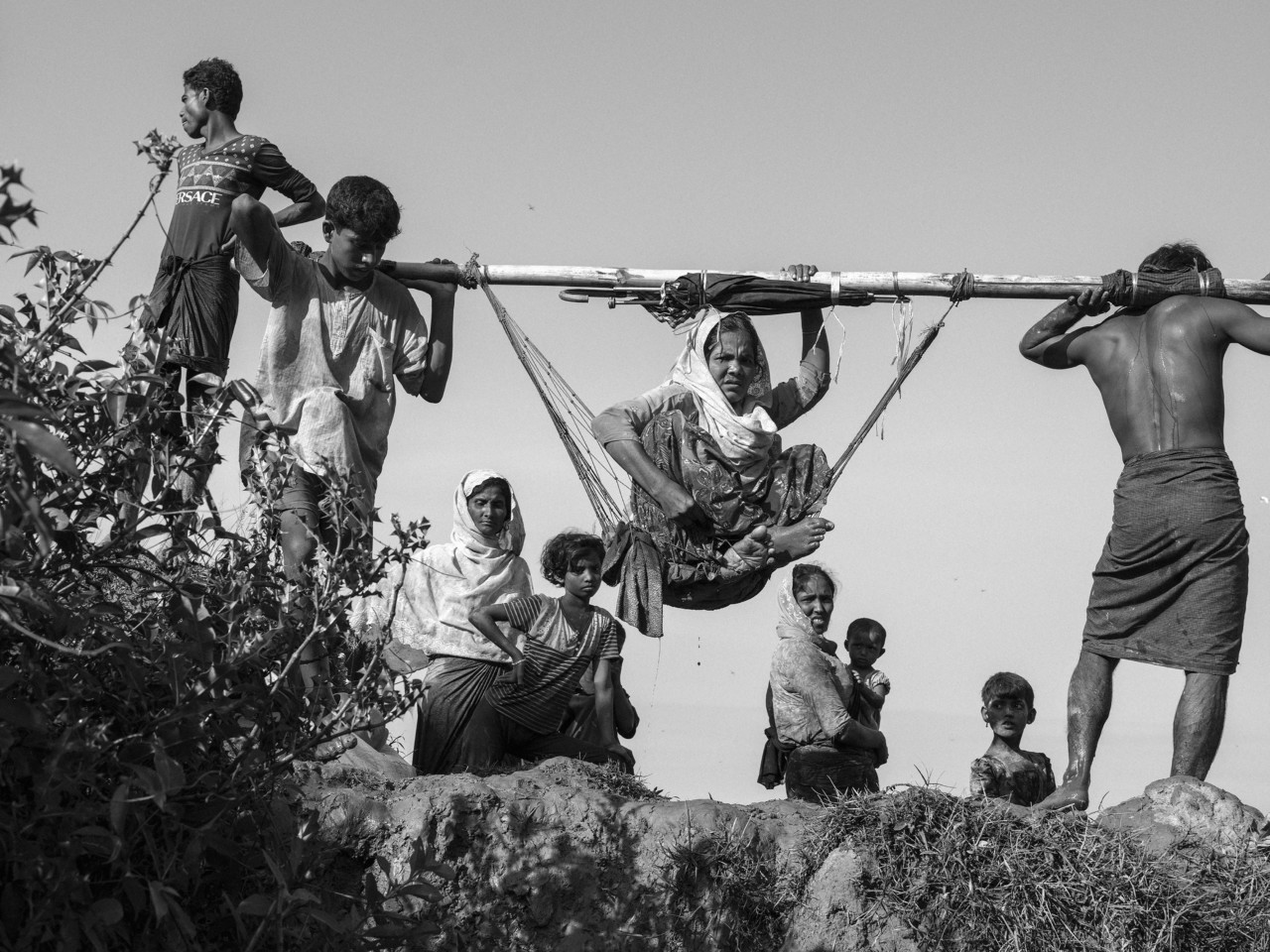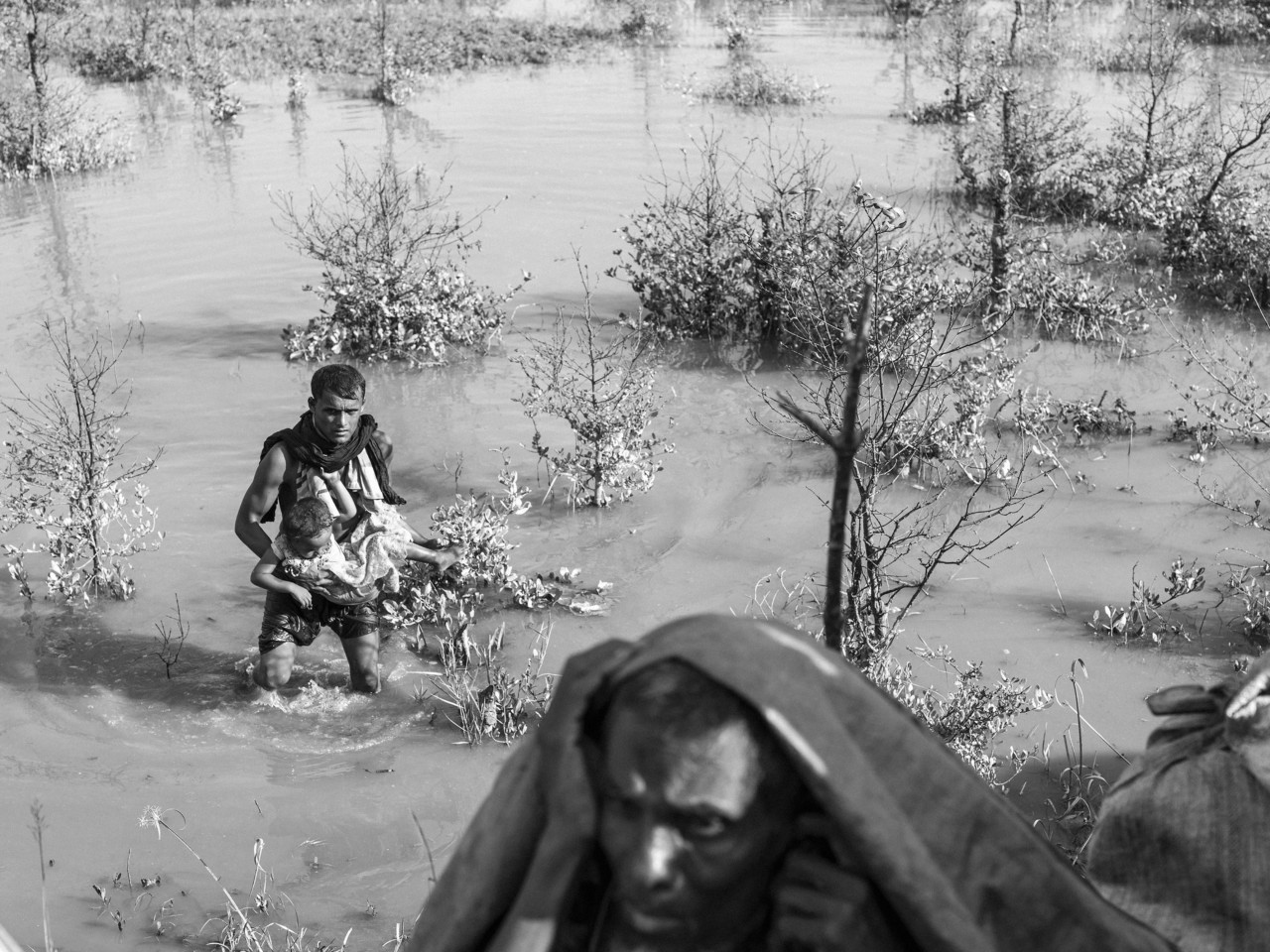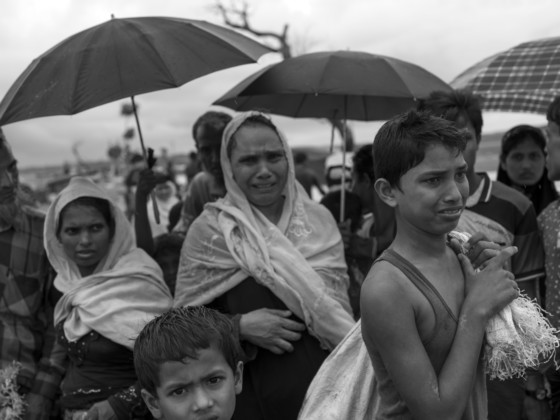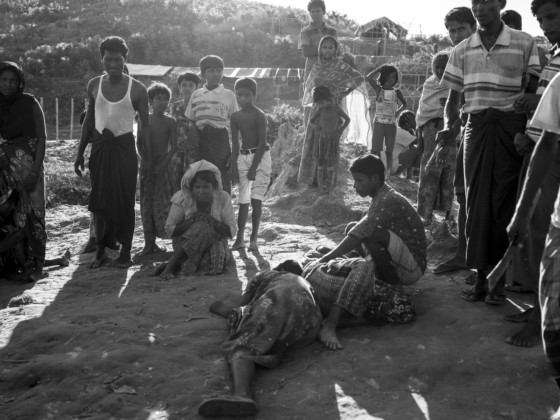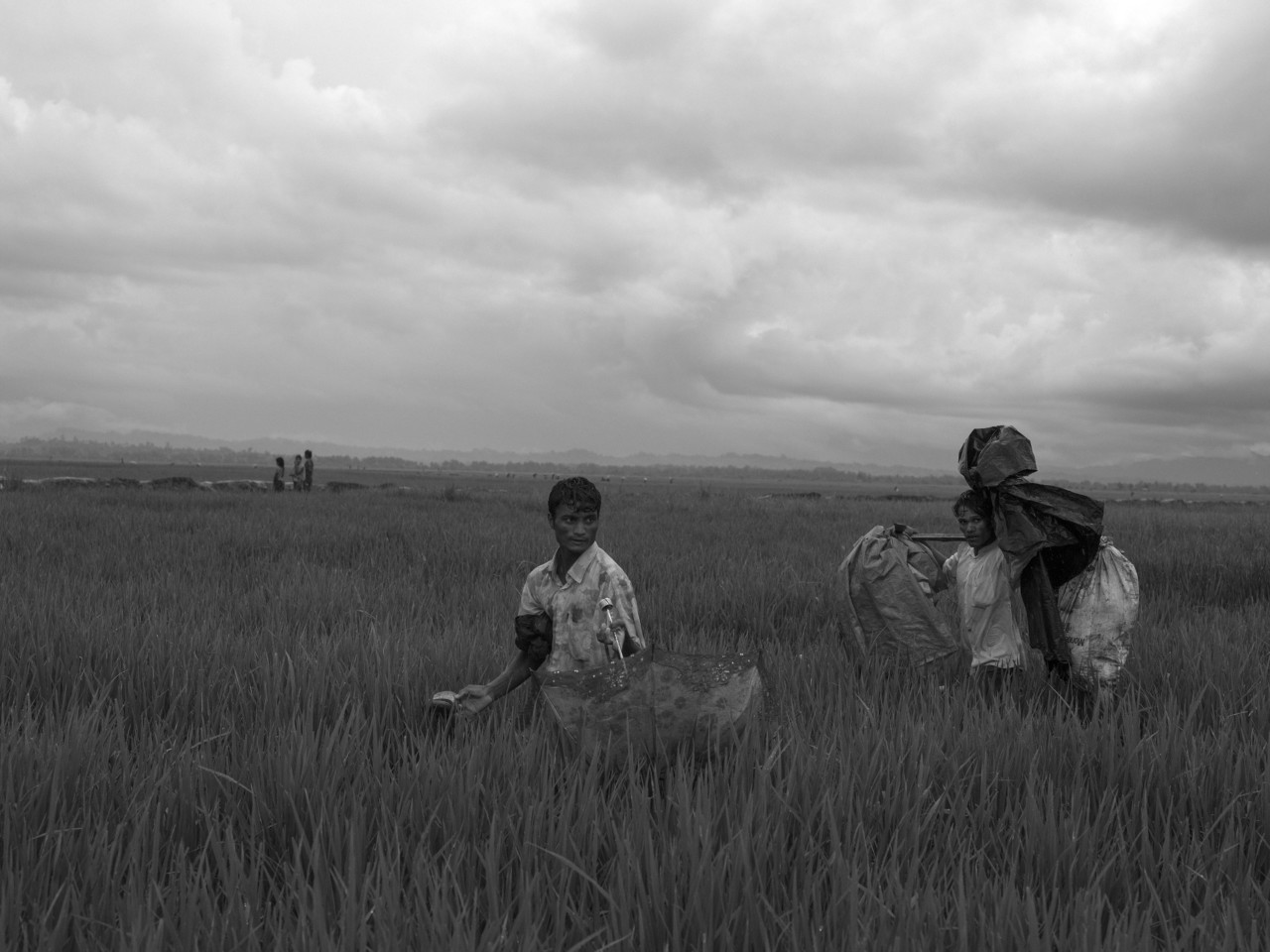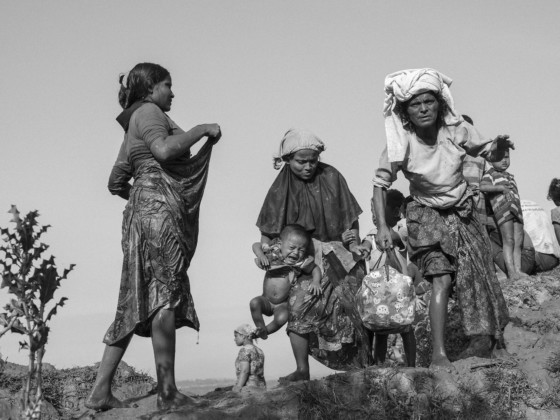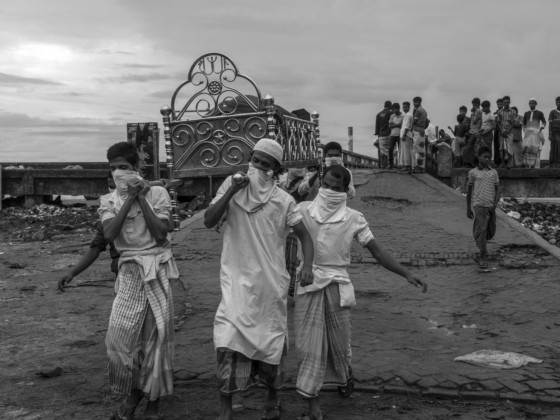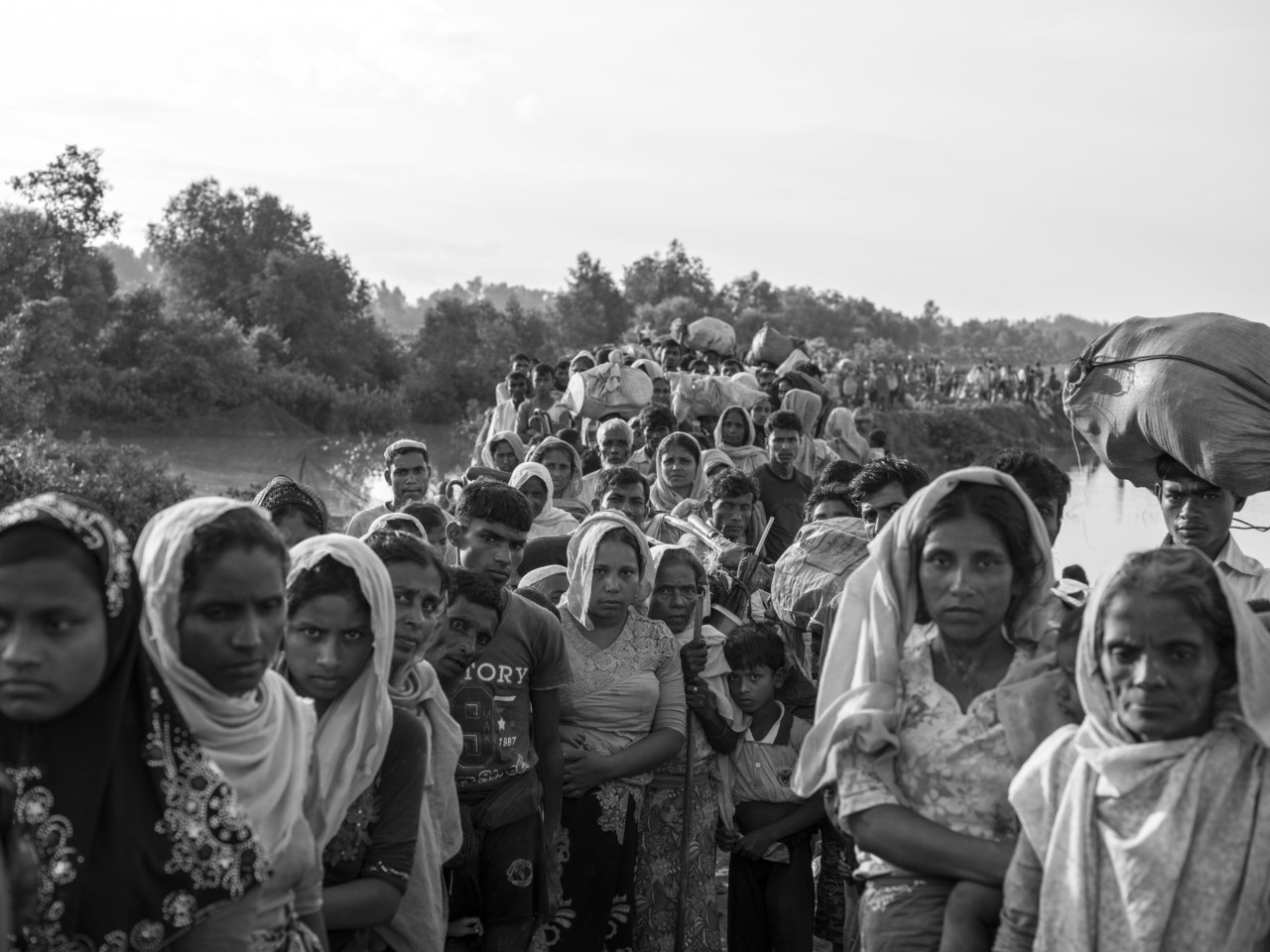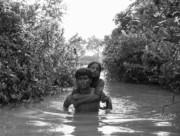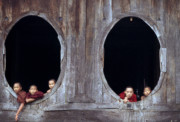Running from Myanmar
Moises Saman visits the river border with Bangladesh as Myanmar’s Rohingya people escape ethnic violence
From Myanmar they flee, more than half of the country’s 1.1 million Rohingya escaping to Bangladesh since August. Renewed, sustained, and seemingly relentless attacks by Myanmar’s military and alleged Buddhist civilian mobs prompted a top U.N. official to label the situation a “textbook example of ethnic cleansing.”
In their quest for safety, Rohingya have, en masse, made treacherous journeys on which many have collapsed, starved to death or drowned, only to get trampled by elephants and endure further hard conditions once crossing the border.
For eight days in early October, Magnum’s Moises Saman travelled to the Bangladeshi border with Myanmar, where tens of thousands were fleeing ethnic violence in Myanmar’s northern Rakhine State.
The camps that have been there for several years are struggling with the sudden, massive, influx of population as locals hurriedly attempt to build extensions. Cramped and damp conditions have led NGOs to warn of a possible cholera outbreak.
It has been reported that the stateless Muslim majority refugees in Bangladesh are struggling to find a welcome once they’ve crossed over. Whilst aid groups and NGOs are present on the ground offering food, basic supplies and medical care, the refugees are generally viewed as illegal immigrants in the country and are denied access to many services in Bangladesh.
Saman spent most of his time in the refugee camps along the Bangladeshi side of the border with Myanmar, and he was able to photograph the arrival of refugees across the Naf River that demarcates the border between Myanmar and Bangladesh.
Immersing himself into the situation, the photojournalist concedes that “there were some challenges” but adds that “they were absolutely insignificant in comparison to the difficulties faced by the Rohingya men, women, and children in their epic journey from their villages in Myanmar to the refugee camps in Bangladesh.”
His images depict the refugees literally wading through the water of the treacherous border that marks the crossing into Bangladesh. “These photographs show the moment when an influx of refugees disembarks on the Bangladeshi side of the Naf River, which is the natural border between Myanmar and Bangladesh,” he explains. “Before reaching land, most refugees disembarked on the shallow muddy shores and then proceeded to wade through vegetation carrying the few belongings that they were able to take with them.”
Reflecting on the trip several weeks later, Saman is still ruminating on the things he witnessed, as news stories about the sustained flow of refugees continue. “In general, it is the most vulnerable people that I saw – elderly men and women, children, and unaccompanied young mothers with their children – that resonate in my mind,” he said. “But a recurrent thought is how most of us, even after witnessing first hand similar crisis in different parts of the world, have absolutely no point of reference in understanding what it is like to be a refugee.”
According to U.N. figures released at the end of October, the number of Rohingya who have fled to Bangladesh is now more than 600,000. “It is a crisis,” Saman says, “and the feeling is that it is going to get worse.”
"Before reaching land, most refugees disembarked on the shallow muddy shores and then proceeded to wade through vegetation carrying the few belongings that they were able to take with them"
- Moises Saman
"In general, it is the most vulnerable people that I saw - elderly men and women, children, and unaccompanied young mothers with their children - that resonate in my mind"
- Moises Saman
On November 2, Myanmar’s de facto leader Aung San Suu Kyi, who has been criticized for her, at best, silence – and, at worst, inflammatory words on the situation – visited Rakhine for the first time since violence erupted in the state in late August. Her brief trip allowed her only short stops in areas affected by the military operation against Rohingya militants.
During her visit, Aung San Suu Kyi did not mention the issue of the one million Rohingya now living over the border. And as the scale of the problem grows and apparent lack of action from the country’s leaders continues, pressure is mounting on international powers to intervene. On November 3, it was announced that the US Secretary of State Rex Tillerson will visit Myanmar later this month to push for an end to violence in Rakhine state.
This work was possible thanks to the collaboration with MSF.


